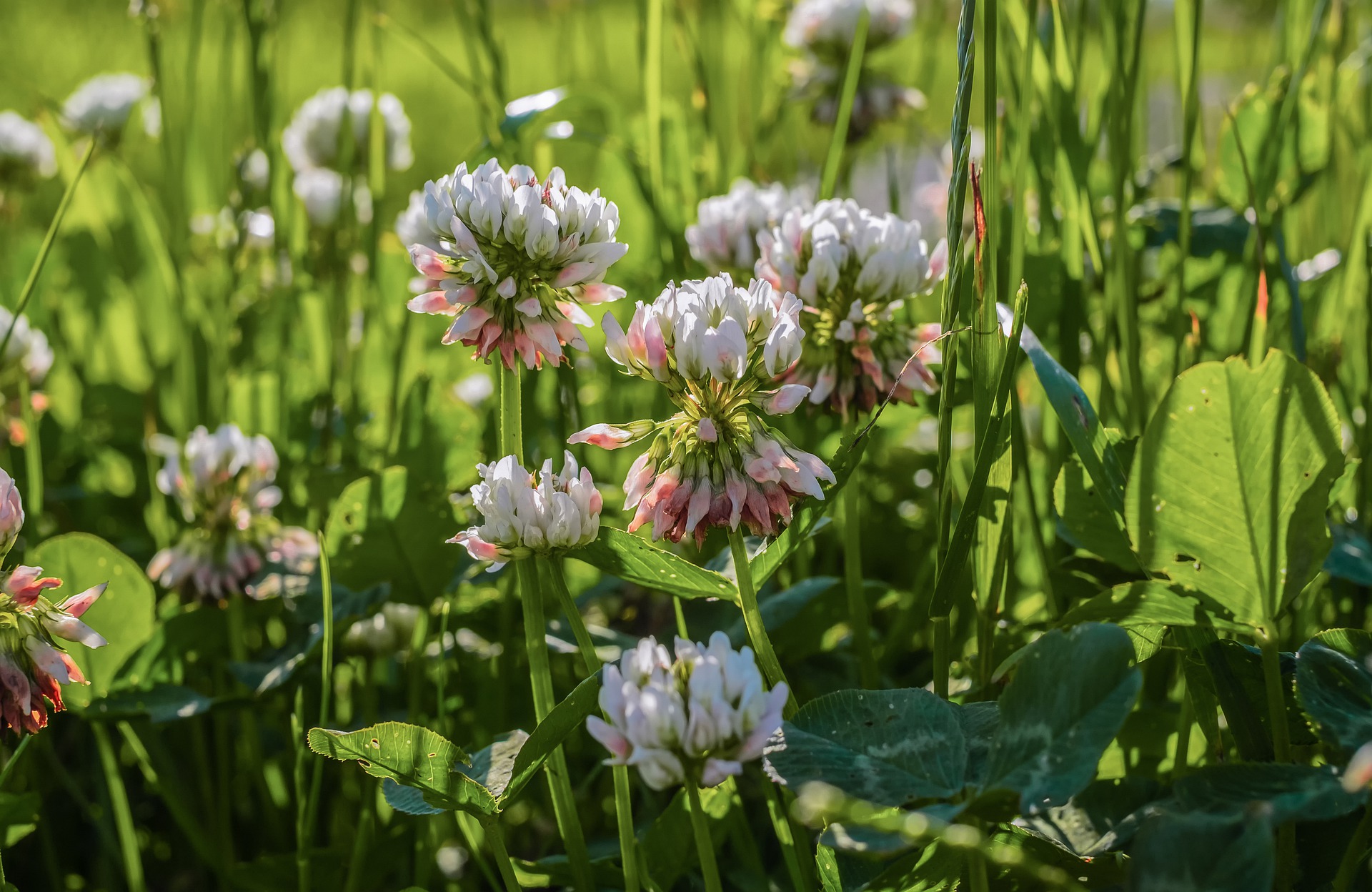

Lawns are a sign of prestige. Once a sign of upper-middle-class British wealth, over the past century the traditional yard transformed into an element of the “American Dream”—owning a house of surrounded by a mini field of greenery. It takes a significant amount of water, fertilizer, and labor to maintain a simple grass lawn—and even more resources for keeping sporting arenas, golf courses, and gigantic McMansions in top shape.
Still, some eco-conscious people and landowners are swapping pristine green grass for a sustainable lawn. Plants still cover the ground and provide beautiful greenery, but take up less water to maintain. Some are even great for local pollinators and utilize different plants and grasses that are often native to an area instead—creating beautiful, unique landscapes that support local wildlife. And in a changing climate, there’s plenty of reasons to ditch the monotonous green grass lawn for something more resilent and resource-savvy.
[Related: It’s time to rip up your lawn and replace it with something you won’t need to mow.]
Native grasses and plants use way less water than a typical lawn
According to the Natural Resource Defense Council, grass lawns consume nearly 3 trillion gallons of water a year, 200 million gallons of gas (for all that mowing), and 70 million pounds of pesticides. A challenge to maintain in some areas considering that some rivers out west are facing historically low levels—it means water shortages for residents out in Western states. The U.S. has experienced a “megadrought” this year, and hot dry conditions are also worsening the incidence of forest fires in various states across the West Coast.
Creeping herbs like thyme and oregano, ornamental grass, evergreen moss or even covering an area with rocks and then surrounding it with perennial native plants require less water and physical maintenance than regular grassy lawns but still make for a beautiful, colorful lawn.
Sustainable lawns create their own fertilizer
Sustainable, biodiverse lawns tend to need a lot fewer fertilizers than the average green grass. The overuse of fertilizers depletes natural nutrients in soil and makes crops like corn dependent on synthetic fertilizers for high yields. The overuse of fertilizers also stops the soil from sequestering carbon, which means more carbon dioxide in the environment and atmosphere. A low fertilizer lawn, which may include clover because it is found in many parts of the U.S. and is simple to maintain. Michael Clarke, the founder of Pulled, an online platform that allows homeowners to find services, has a background in landscape architecture and says that clover lawns are an especially sustainable way to have greenery on a property.
“Clover and biodiverse lawns are self-fertilizing since they readily uptake nitrogen from the atmosphere and return it to the soil. This allows them to create their own natural fertilizer from the atmosphere, helping to build the soil profile,” Clarke says. “Clover can be mixed with Kentucky bluegrass or fescues, to help fertilize them and eliminate the need for chemical fertilizers.”
Pollinators need plants we often see as weeds
Traditional grass lawns don’t provide flowers for pollinators, if anything, companies encourage landscapers to weed for clovers or to spray chemicals for “weeds” that may crop up. But those weeds are often necessary for small insects.
Having a sustainable lawn that attracts and supports pollinator populations is crucial as the number of bee colonies per hectare has declined by 90 percent since 1962, according to Greenpeace USA. That puts our food supply in danger— about 80 percent of crops that are grown for human consumption require various animals including bees, butterflies, and even bats to pollinate plants.
Clover attracts pollinators like bees and can help declining populations, as well as perennial native flowers that tend to differ from region to region. For example, the shooting starflower is native to the Northeast and is great for pollinators, or black-eyed susan flowers that are native to Florida.
Diverse greenery make for tougher, more climate-resilent lawns
Clarke also says that sustainable lawns that are mixed with plants like clover are more resistant to droughts. On the other hand, in times of floods, there is less nutrient leaching, when nutrients that help plant growth are washed away from the plant’s roots, from overwatering sustainable lawns. A sustainable lawn also uses less chemicals to kill off weeds which is important because chemicals end up in the soil and can be carried away into a nearby water system. A biodiverse lawn is also less susceptible to some diseases and pests because it creates an environment for beneficial insects like ladybugs that eat aphids.
[Related: Plant a garden that helps the planet by devouring carbon.]
“[Biodiverse lawns] build the soil as they pull nitrogen from the atmosphere. Therefore they can outcompete weeds and provide a more suitable environment for their success,” Clarke says.
Sustainable, native lawns are better for soil health and carbon sequestration without the need for trees because they can trap large amounts of carbon just like trees do. Some of those native plants make for good compost and are also great for absorbing rainfall. Perennial plants that are used in rain gardens, which include biodiverse plants, often stop water stagnation after rain, preventing mosquitoes from moving in and spreading disease.
A biodiverse lawn is not only beautiful, it’s an environment that keeps on giving for both a homeowner and nearby wildlife. Naitve grasses and flowers provide all of the wanted greenery and habitats, but without the extra labor and resources.
Correction August 23, 2021: The original version of this post mistakenly identified a photo of redwood sorrel as clover. The photo has been changed to an accurate image of clover.
